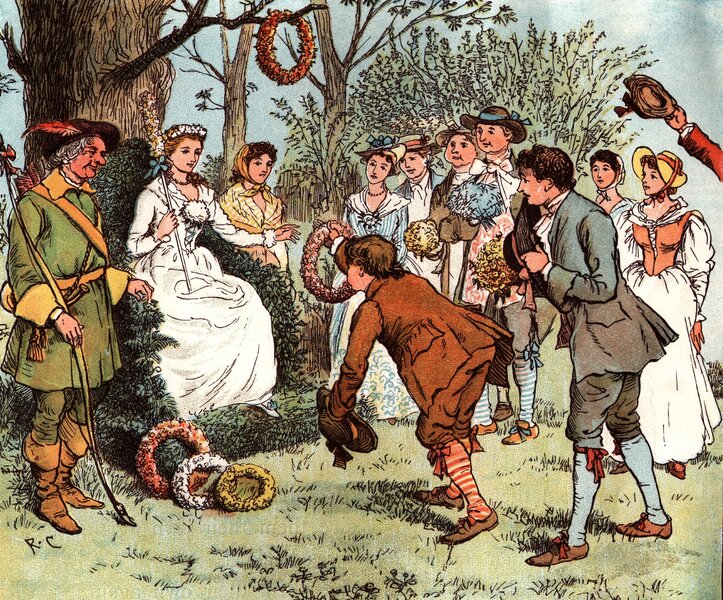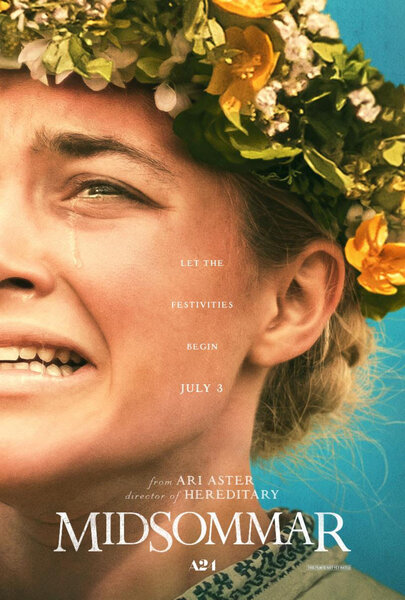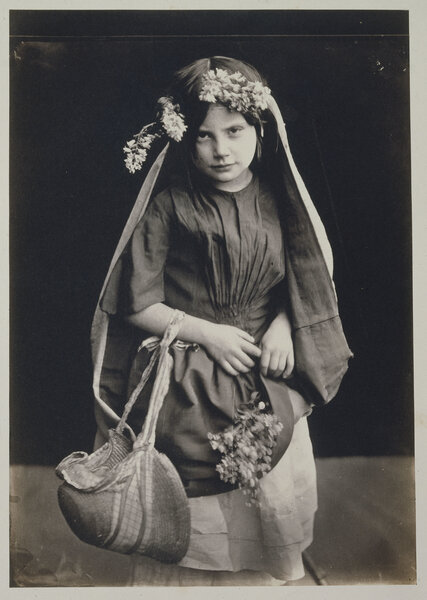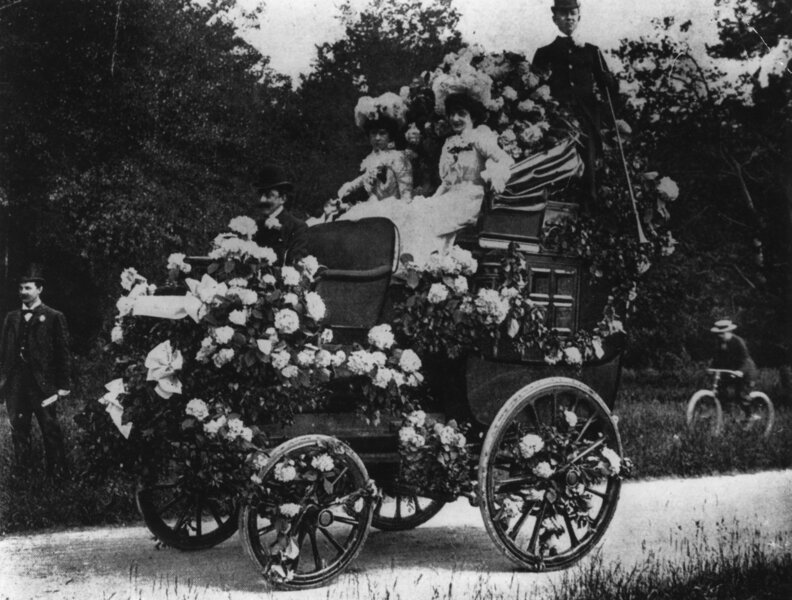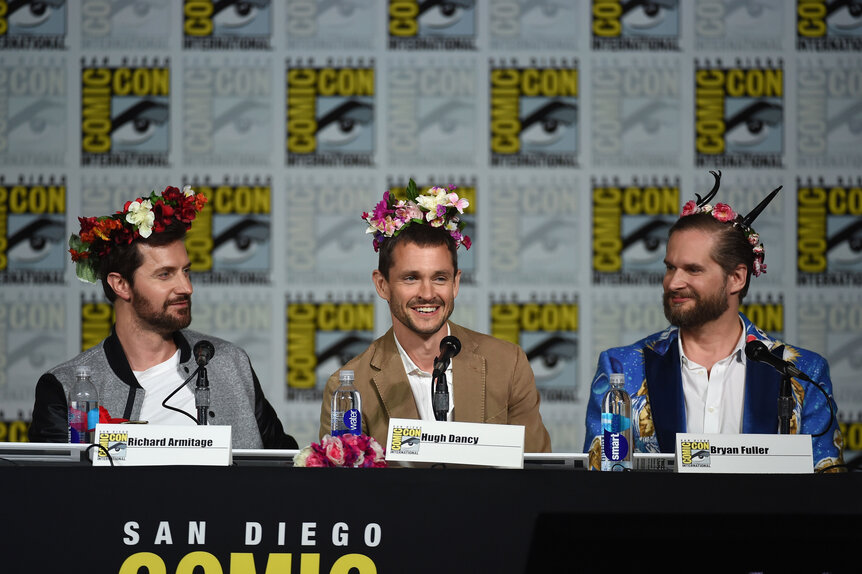Create a free profile to get unlimited access to exclusive videos, sweepstakes, and more!
The creepy menace of flower crowns in Midsommar
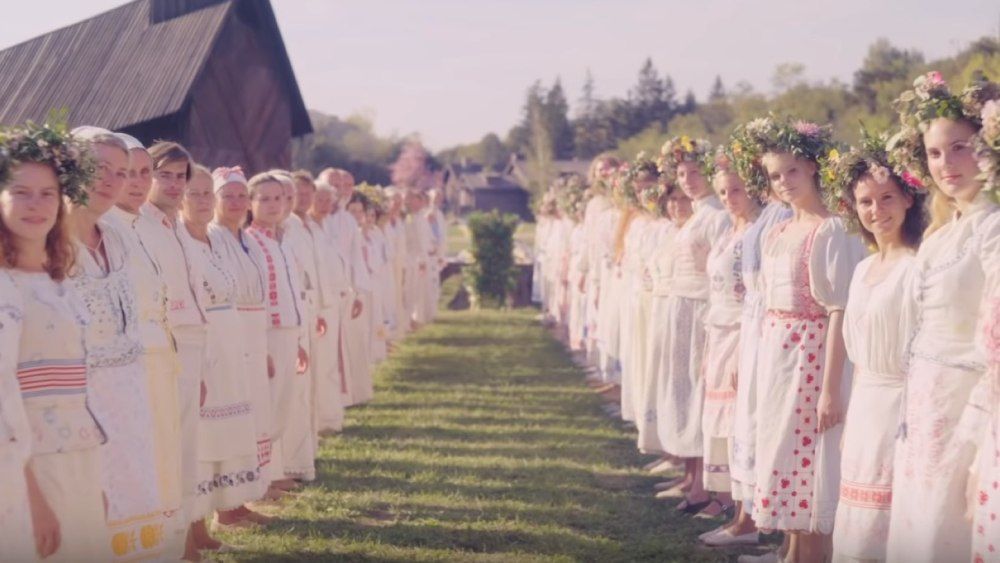
"Florals? For spring? Groundbreaking."
The response dripping in sarcasm from Meryl Streep in The Devil Wears Prada could also be applied to the suggestion of a flower crown accessory, whether you are heading to a music festival such as Coachella or Glastonbury or plan on wearing one to a summer wedding. It is a timeless look that does not break the sartorial wheel. However, there is a fascinating juxtaposition between flowers representing life and love with the horror movies and TV shows that use botanicals as a visual centerpiece
As a form of pageantry, floral wreaths has been worn by many cultures and religions across the globe from Ancient Greece to brides in China. May Queens and Queen Victoria alike have worn this type of headpiece, but the history of this garland also has a sinister side, which is why it is the perfect accessory for the poster and crucial sequence in Ari Aster’s follow-up to the super creepy Hereditary.
Spoilers ahead for Midsommar.
Midsommar is far from the first folk horror film with The Wicker Man, Picnic at Hanging Rock, Witchfinder General, and Kill List all drawing on traditional stories, counterculture, and elements of nature in order to terrify outsiders. Rituals and dress that are alien to the interlopers are an effective way to establish who is in on the secret. When Dani (Florence Pugh) finally ditches her sweats for the traditional attire to take part in the dancing competition, she goes from being the Other to part of this commune. She is welcomed into the family and if she plays her cards right she can stay. The flower crown that features on the Midsommar key art is beautiful, but Pugh's anguished face tells a different story. All is not as it seems; nevertheless, this nightmare might turn into a cathartic paradise for Dani.
Up to this point, Dani has been on the outside of everything in her own life, both in Sweden and back home in the United States. The only reason she is on this trip is because her terrible boyfriend can’t bring himself to break up with her in the aftermath of a family tragedy.
Her sobs of anguish echo throughout the film and it is only when she is dancing around the Maypole that she finally looks both at peace and happy. She becomes at one with this group and nature. The latter is quite literal thanks to a hallucinogenic tea that makes it seem like roots are growing out of her feet.
The myth that started this competition originally involved people dancing themselves to death; now, they honor the person with the most stamina by crowning her May Queen. A dance competition sounds pretty fun, but it is underscored with menace. I expected this “Big One” to mean that whoever was crowned would be the final sacrifice — but heavy lies the crown even when it is made of flowers. Instead of being the final sacrifice, Dani gets to choose who will end up as the last offering.
The May Queen doesn’t just get a fancier floral crown than the losing dancers; she also gets a capelet followed by a full-body garment that wouldn’t have looked out of place at the Met Gala this year. At the feast, the flowers pulse as if they are breathing, which is an incredibly beautiful and disturbing image. Again, there is a dichotomy between what is natural and what is not. There is something “off” about this place, but this could just be a clashing of cultures.
Pagan and Wiccan rituals have often frightened others, and the disappearance of flower crown in Medieval times coincides with the notion that it was a blasphemous accessory — but you can't keep a good flower crown down. By the Victorian era, they were decidedly back in fashion (see photo above).
In the 20th-century, flowers would come to be associated with another feared cultural movement. In 1967, Scott McKenzie sang, “If you’re going to San Francisco, be sure to wear some flowers in your hair.” It was the summer of love and flower power was in full swing. Three years later, after a number of violent incidents (including the Manson family killings) the hippie subculture was seen as a threat to the moral fabric of society. Unlike the Medieval period, flower crowns didn’t get banished for this association.
In the 1973 movie The Wicker Man, pagan elements feature in the ceremonial aspects including creepy animal masks and yep, you guessed it, flower crowns. On the remote Summerisle, police officer Neil Howie (Edward Woodward) is investigating a missing person case and instead finds his worst nightmare. As a devout Christian, the rituals he sees taking place openly go against everything he believes in. As with Midsommar, the maypole is a centerpiece and flower crowns are part of the May Day celebrations. It is a situation that doesn’t end well for the outsider.
It is clear that The Wicker Man inspired Aster’s Midsommar, but unlike Howie, who can’t reconcile his beliefs with what he is witnessing, Dani finds a sense of place within this community. It is an outlet for her grief, and the flowers she wears around her head (and later all over her body) give her life.
Hannibal imagery also dominated my thoughts while watching Midsommar — both in terms of the show itself and the Fannibal flower crowns, which are associated with show's fandom. At San Diego Comic-Con in 2015, showrunner Bryan Fuller and stars Hugh Dancy and Richard Armitage wore flower crowns on stage in honor of the faithful Fannibals.Hannibal (Mads Mikkelsen) appreciates a murder tableaux in both the work of others and some of his own finest creations. Some of these are mirrored in Midsommar including the grotesque ways in which these bodies are defiled. Back skin turned into angel wings in the Season 1 episode “Coquilles” and the come to life (and death) version of Botticelli’s Primavera in Season 3 are two images reflected in the Midsommar sacrifices — but it is the floral stuffed “Tree Man” from Season 2’s “Futamono” that is most like Midsommar in its nightmarishly beautiful vision.
Flowers are often a sign of life, but they also go hand-in-hand with aspects of death. In Midsommar the flower crown gives life, but as it's eventually revealed, the wearer has the power to take it away.
The views and opinions expressed in this article are the author's, and do not necessarily reflect those of SYFY WIRE, SYFY, or NBC Universal.
